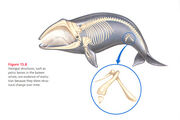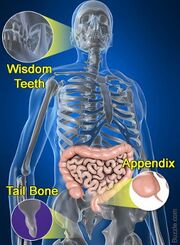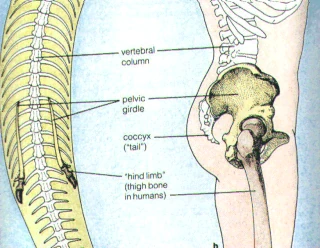
Richard Dawkins Vestigial Organs The Wings of the Flightless Cormorant-0

X-ray of impacted wisdom teeth (Friedman Dental Group, 2013).
Write the first paragraph of your page here.
Definition of Vestigial[]
Vestigial is a term commonly used when referring to a body part that has become reduced in size from its original form or has lost its function due to evolutionary change.
Charles Darwin, in On the Origin of Species (1859), referred to "vestiges" that were left over from the course of evolution. He stated that these organs were once needed for the organism's survival, but over the course of time, they no longer needed them for survival and thereby lost their function. By looking at the similarity of vestigial organs between two different species, scientists have determined that certain individuals are related.
Example of Vestigial Organs[]
Wisdom teeth are vestigial third molars that most people are very familiar with. Evolutionists believed that our ancestors used these teeth to grind up the hard seeds and nuts that were once part of the human diet. Due to the advent of cooking processes, humans have lost the need for these teeth. Over the course of time, human jaws have become smaller and thus no longer need the third molars to survive. This has also increased the number of impacted wisdom teeth that need to be removed (see attached photos). Biologists also believe that because there were no dental hygiene habits thousands of years ago, many humans probably lost many of their teeth to decay and thus their wisdom teeth would not be affected by a crowded mouth.

Edmonds, Molly. (n.d.). How Vestigial Organs Work. In HowStuffWorks. Retrieved October 24, 2013, from http://science.howstuffworks.com/life/human-biology/vestigial-organ.htm.
Darwin, C. (1859). On the origin of species. (150 ed.). New York: Penguin Group.
I found it interesting how the appendix was thought to be a vestigial structure, but is not being considered this as much any more. Any thoughts on that?

Vestigial organs

Vestigial structure in snakes remain after they lost their legs